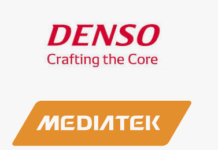As the world races toward a trillion-dollar semiconductor future, the spotlight is often on chip fabrication the billion dollar fabs, geopolitical rivalries, and high stakes supply chains. But there’s another, often underappreciated layer of this ecosystem where India has a real edge: chip design.
Chip design is the intellectual brain behind every chip from defining architecture and logic to physical layout and verification. While building fabs requires staggering capital outlays and high-end materials, chip design is often seen as a field driven more by brains than brick-and-mortar. That perception is mostly accurate but not entirely. And therein lies the nuance.
India already plays a significant role in global chip design. With over 20% of the world’s semiconductor design talent, the country contributes to the design of more than 2,000 chips annually. Global giants like Intel, Qualcomm, NVIDIA, MediaTek, and Texas Instruments have long recognized this advantage and run large-scale R&D and design centers here. Yet, as India sets its sights on becoming a global semiconductor hub, it must address a critical misunderstanding: that chip design needs only engineers and not capital.
Let’s be clear chip design is far less capital-intensive than fabrication, which can cost upwards of $10 billion for a single fab. Startups in chip design don’t need clean rooms or photolithography machines. What they do need is access to extremely expensive design software tools (EDA), IP licensing, prototyping support, and top-tier engineering talent. These components while not as visible as a factory floor are not cheap by any means.
For instance, industry-standard EDA tools from companies like Synopsys, Cadence, or Siemens EDA can cost several crores per license, per seat. Licensing intellectual property blocks such as ARM cores or DDR memory controllers can also run into tens of lakhs to crores, depending on complexity and usage rights. And finally, once a chip is designed, validating it through a “tape-out” (submitting it for fabrication, even just for a prototype) can cost anywhere from $100,000 to $1 million, depending on the foundry, process node, and scale.
So, while India’s chip design capability is undoubtedly talent-driven, it cannot be sustained or scaled without targeted capital support. And this is where initiatives like the Design Linked Incentive (DLI) Scheme under India’s ₹76,000 crore Semicon India Programme are crucial. The government’s recognition that design deserves its own incentives separate from manufacturing shows an understanding of the layered nature of the semiconductor industry.
We are already seeing positive outcomes from this shift in focus. Startups like Chipspirit, based in Bengaluru, are leading the charge in secure, hardware only encryption chips, working directly with the Indian Defence forces. The company has not only been recognized by the Ministry of Defence and felicitated at Aero India 2025 by Defence Minister Rajnath Singh, but it has also won multiple government grants and awards for innovation in secure chip design. This is a clear demonstration of how Indian startups can excel in niche, high impact semiconductor domains if given the right support ecosystem.
Furthermore, India’s strategic positioning as a democratic counterweight in the global tech landscape makes it an attractive partner for Western nations seeking alternatives to China for trusted chip development. This geopolitical opportunity must be matched with domestic readiness: not just in manufacturing but also in trusted, indigenous chip IP. That’s a role only chip design companies can fill.
The way forward requires a three-pronged approach, much of which is already reflected in the objectives of India’s Chip to Startup (C2S) programme,
- Democratize access to tools: Set up national or regional EDA tool libraries or cloud-based platforms, subsidized or pooled across academic and startup communities.
- Accelerate IP funding and licensing: Encourage local IP creation through grants and ease partnerships with global IP providers.
- De-risk prototyping: Provide a national platform for affordable prototype tape-outs via partnerships with global foundries or intermediary design houses.
The C2S initiative already touches these areas, but scaling and integrating it with schemes like DLI will be key to unlocking India’s full value in the semiconductor value chain.
India’s push for semiconductor self-reliance must move beyond the optics of fabs and embrace the invisible IP layer where real sovereignty lies. The next-generation chips powering our defense systems, AI workloads, or communication networks should not only be made in India—but first thought, designed, and validated in India.
We have the talent. The time is ripe. What we now need is the will to invest not just in infrastructure, but in intellectual capital. Chip design may not grab headlines like massive fabs, but it is the deep-tech backbone that will define the next decade of India’s tech evolution.

















